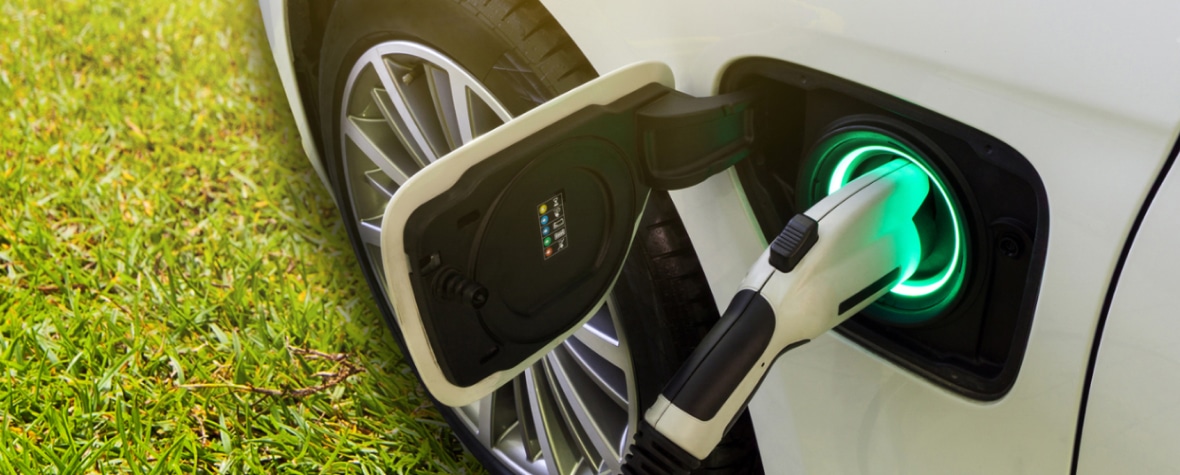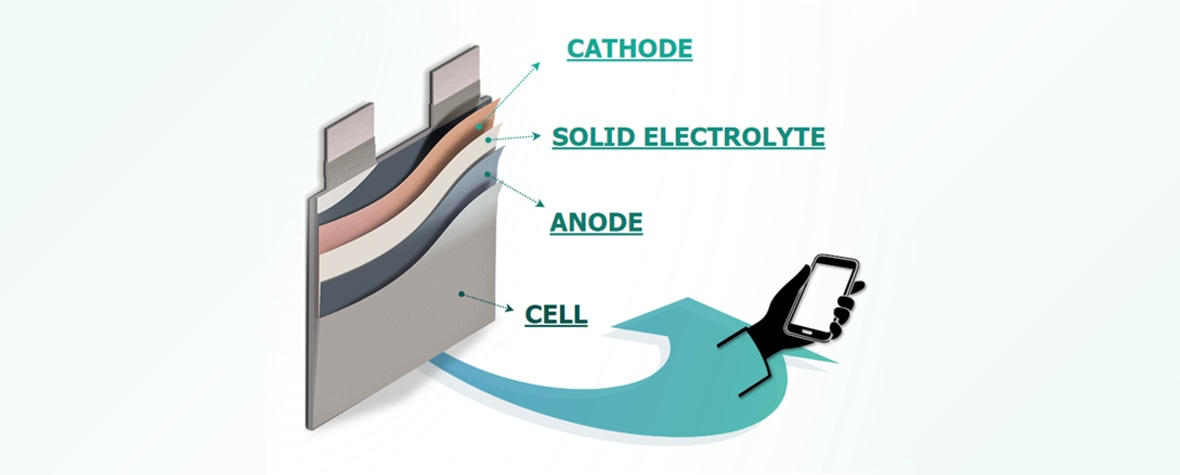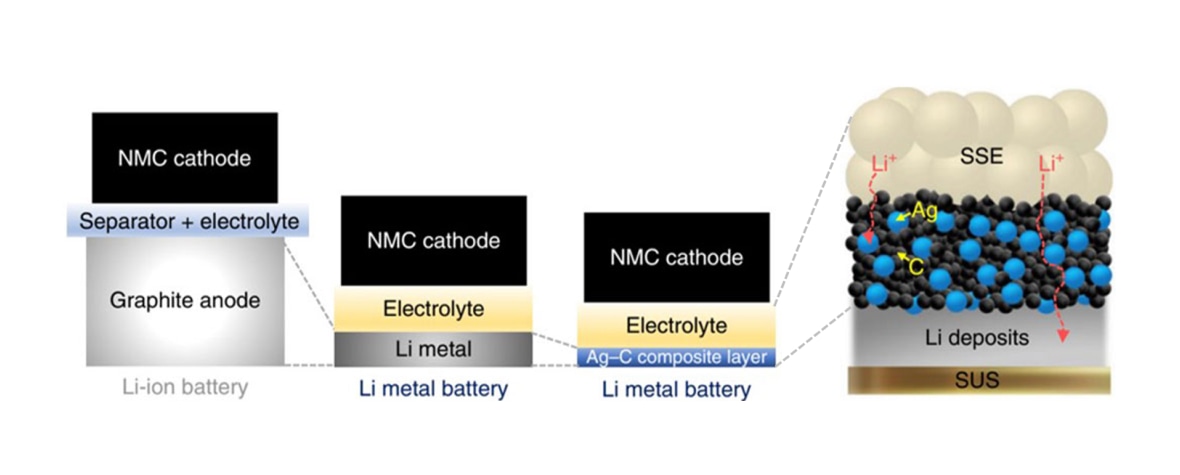Future vehicles and mobile devices will require more compact and safer power sources. Battery technology is expected to evolve from the current lithium-ion battery (LIB) to all-solid-state batteries and lithium metal batteries, pursuing innovations in energy density, safety, life, and cost. SAIT is developing novel materials to enable technologies that employ state-of-the-art computational methods and high-speed synthesis techniques.
Power Solutions Enabling e-Mobility and Future Mobile Devices

- ① Future Mobile Power and Microbatteries
The mobile devices of tomorrow will be smaller, more functional, and more wearable, enhancing people’s lives with new experiences. In particular, wearable devices will have many features, such as health monitoring, artificial intelligence (AI), and augmented reality (AR), and will come in a variety of forms, such as watches, glasses, and earphones. To supply reliable power to compact wearable devices, batteries should be smaller and safer and have a higher capacity. In addition, the market for small electronic devices requiring microbatteries, such as IoT devices, medical devices, radio frequency identification (RFID), and electronic cosmetics, is growing.
- ② EV Battery
The importance of electric vehicles (EVs) for the efficient use of energy is increasing along with worldwide efforts to reduce greenhouse gas emissions and industrialize green energy. Batteries are the key technology for the success of the EV business. Innovative battery technologies can increase the driving range and reduce the cost of electric vehicles. Battery technology is expected to evolve from the current lithium-ion battery (LIB) to next-generation high-capacity LIBs, all-solid-state batteries, and lithium-metal-based batteries, pursuing improvements in energy density, safety, and life, as well as reducing costs.
- ③ Battery Management System (BMS)
The battery management system (BMS) is an important component used in mobile devices, electric vehicles (EV), and energy storage systems (ESS) to monitor the state of batteries and ensure safe and reliable operation. A BMS measures the voltage, temperature, and state of a battery (e.g., state of charge, state of health, and power limit estimation). To maximize the usable energy of a battery and protect it from abnormal operation, the BMS should accurately monitor the state of each battery in the system. The present BMS has relatively large safety margins owing to its limited ability to measure the battery’s internal state estimation, thus resulting in reduced available battery capacity and performance. The goal is to improve battery utilization without increasing the physical battery capacity or changing its specifications.
Innovation in materials is the key to boosting the electromobility market. Key R&D trends include increasing energy density with new materials and developing multi-functional technologies. In recent years, it has become increasingly important to make batteries safer for use in EVs and mobile devices to mitigate the risk of fire.
- ① Future Mobile Power and Microbatteries
SAIT is developing high-power, safe battery technologies with high-performance solid electrolytes and high-density electrodes to support the development of wearable devices that incorporate health monitoring, AI, and AR.

- ② EV Battery
SAIT is actively researching post-Li-ion battery systems, such as all-solid-state batteries technologies, which will reduce the risk of explosion compared to Li-ion batteries and extend the driving range of EVs to that of internal combustion engine (ICE) vehicles. Currently, SAIT is researching new materials and cell designs for solid-state batteries, including anode-free structures. Novel sulfide- and oxide-based lithium-ion conductors, the interfaces adjacent to them, and the Li metal host structure are major areas of exploration.

- ③ Battery Management System (BMS)
SAIT is investigating algorithms to estimate the state of a battery based on electrochemical-thermal (ECT) modeling and machine learning technology, which is expected to improve usable energy. ECT modeling technology mathematically calculates the internal physical phenomena of batteries, which enhances the monitoring ability of the BMS. Machine learning is leveraged to optimize ECT modeling. We are also studying fault diagnosis (e.g., internal-short detection) algorithms based on internal states from ECT modeling to detect abnormal symptoms early and prevent thermal runaway. The scope of application of this technology will expand from mobile devices to ESS and EVs.